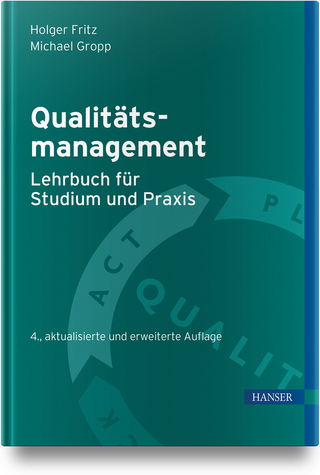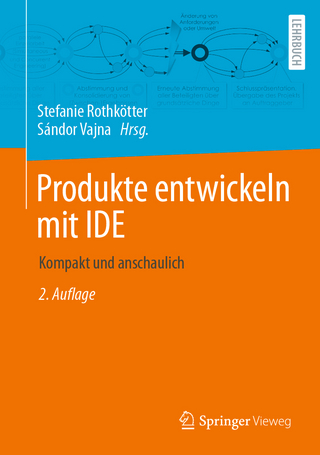
Operations and Supply Chain Management for MBAs
John Wiley & Sons Inc (Verlag)
9781118978030 (ISBN)
- Titel ist leider vergriffen;
keine Neuauflage - Artikel merken
Preface xi
Part 1 Strategy and Execution 1
1 Operations and Supply Chain Strategy for Competitiveness 2
1.1 Operations 4
1.1.1. Systems Perspective 5
1.1.2. Inputs 6
1.1.3. Transformation Processes 6
1.1.4. Outputs 7
1.1.5. Control 9
1.1.6. Operations Activities 9
1.1.7. Trends in Operations and Supply Chain Management 10
1.2 Customer Value 11
1.2.1. Costs 11
1.2.2. Benefits 12
1.2.3. Innovativeness 12
1.2.4. Functionality 14
1.2.5. Quality 14
1.2.6. Customization 15
1.2.7. Responsiveness 18
1.3 Strategy and Competitiveness 19
1.3.1. Global Trends 19
1.3.2. Strategy 21
1.3.3. Strategic Frameworks 22
1.3.4. Core Capabilities 28
2 Executing Strategy: Project Management 34
2.1 Defining a Project 37
2.2 Planning the Project 38
2.2.1. The Project Portfolio 38
2.2.2. The Project Life Cycle 41
2.2.3. Projects in the Organizational Structure 42
2.2.4. Organizing the Project Team 42
2.2.5 Project Plans 43
2.3 Scheduling the Project 46
2.3.1. Project Scheduling with Certain Activity Times:
A Process Improvement Example 47
2.3.2. Project Scheduling with Uncertain Activity Times 50
2.3.3. Project Management Software Capabilities 55
2.3.4. Goldratt’s Critical Chain1 56
2.4 Controlling the Project: Earned Value 58
Part 2 Process and Supply Chain Design 65
3 Process Planning 66
3.1 Forms of Transformation Systems 68
3.1.1. Continuous Process 68
3.1.2. Flow Shop 69
3.1.3. Job Shop 75
3.1.4. Cellular Production 79
3.1.5. Project Operations 83
3.2 Selection of a Transformation System 83
3.2.1. Considerations of Volume and Variety 84
3.2.2. Product and Process Life Cycle 86
3.2.3. Service Processes 87
4 Capacity and Scheduling 97
4.1 Long‐Term Capacity Planning 99
4.1.1. Capacity Planning Strategies 100
4.2 Effectively Utilizing Capacity Through Schedule Management 104
4.2.1. Scheduling Services 106
4.3 Short‐Term Capacity Planning 109
4.3.1. Process‐Flow Analysis 109
4.3.2. Short‐Term Capacity Alternatives 115
4.3.3. Capacity Planning for Services 117
4.3.4. The Learning Curve 118
4.3.5. Queuing and the Psychology of Waiting 121
5 Supply Chain Planning and Analytics 126
5.1 Importance of Supply Chain Planning and Analytics 128
5.2 Demand Planning 129
5.2.1. Forecasting Methods 130
5.2.2. Factors Influencing the Choice of Forecasting Method 131
5.2.3. Time Series Analysis 132
5.2.4. Causal Forecasting with Regression 141
5.2.5. Assessing the Accuracy of Forecasting Models 147
5.3 Sales and Operations Planning 148
5.3.1. Aggregate Planning Strategies 149
5.3.2. Determining the Service Level: An Example
Using the Newsvendor Problem 150
5.3.3. Collaborative Planning, Forecasting, and Replenishment 153
6 Supply Chain Management 157
6.1 Defining SCM 160
6.2 Supply Chain Strategy 162
6.2.1. Strategic Need for SCM 163
6.2.2. Measures of Supply Chain Performance 165
6.3 Supply Chain Design 166
6.3.1. Logistics 167
6.4 Sourcing Strategies and Outsourcing 175
6.4.1. Purchasing/Procurement 177
6.4.2. Supplier Management 179
6.5 Inventory and Supply Planning 180
6.5.1. Functions of Inventories 181
6.5.2. Forms of Inventories 182
6.5.3. Inventory‐Related Costs 183
6.5.4. Decisions in Inventory Management 185
6.6 Role of Information Technology 185
6.6.1. ERP 186
6.6.2. Customer Relationship Management Systems 188
6.7 Successful SCM 188
6.7.1. Closed‐Loop Supply Chains and Reverse Logistics 189
Supplement A 195
Part 3 Managing and Improving the Process 199
7 Monitoring and Controlling the Processes 200
7.1 Monitoring and Control 201
7.2 Process Monitoring 203
7.2.1. Stages of Operational Effectiveness 203
7.2.2. Balanced Scorecard 204
7.2.3. The Strategy Map 206
7.2.4. ISO 9000 and 14000 207
7.2.5. Failure Mode and Effect Analysis (FMEA) 208
7.3 Process Control 209
7.3.1. Statistical Process Control 210
7.3.2. Constructing Control Charts 213
7.4 Controlling Service Quality 216
7.4.1. Service Defections 217
8 Process Improvement: Six Sigma 225
8.1 Approaches for Process Improvement 228
8.2 Business Process Design (Reengineering) 229
8.3 Six Sigma and the DMAIC Improvement Process 231
8.3.1. Example Six Sigma Project 232
8.4 The Define Phase 235
8.4.1. Benchmarking 235
8.4.2. Quality Function Deployment 236
8.5 The Measure Phase 238
8.5.1. Defects per Million Opportunities (DPMO) 239
8.5.2. Measurement Systems Analysis 241
8.6 The Analyze Phase 243
8.6.1. Brainstorming 244
8.6.2. Cause-and-Effect Diagrams 246
8.6.3. Process Capability Analysis 246
8.7 The Improve Phase 249
8.7.1. Design of Experiments 249
8.8 The Control Phase 251
8.9 Six Sigma in Practice 251
8.9.1. Six Sigma Roles 251
8.9.2. Becoming Certified 252
8.9.3. The Need to Customize Six Sigma Programs 252
9 Process Improvement: Lean 258
9.1 History and Philosophy of Lean 261
9.1.1. Traditional Systems Compared with Lean 262
9.2 Specify Value and Identify the Value Stream 266
9.2.1. Identify the Value Stream 268
9.3 Make Value Flow 271
9.3.1. Continuous Flow Manufacturing 272
9.3.2. The Theory of Constraints 273
9.4 Pull Value through the Value Stream 275
9.4.1. Kanban/JIT in Services 276
9.5 Pursue 5S Perfection 277
9.5.1. 5S 277
9.5.2. The Visual Factory 277
9.5.3. Kaizen 278
9.5.4. Poka Yoke 278
9.5.5. Total Productive Maintenance 278
9.6 Benefits of Lean and Lean Six Sigma 279
9.6.1. Lean Six Sigma 280
Glossary (online)
Index 285
| Erscheint lt. Verlag | 7.9.2017 |
|---|---|
| Verlagsort | New York |
| Sprache | englisch |
| Themenwelt | Wirtschaft ► Betriebswirtschaft / Management ► Logistik / Produktion |
| Wirtschaft ► Betriebswirtschaft / Management ► Projektmanagement | |
| ISBN-13 | 9781118978030 / 9781118978030 |
| Zustand | Neuware |
| Informationen gemäß Produktsicherheitsverordnung (GPSR) | |
| Haben Sie eine Frage zum Produkt? |
aus dem Bereich


